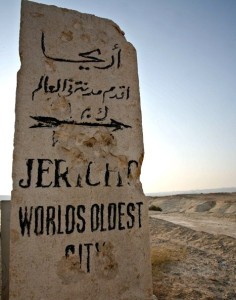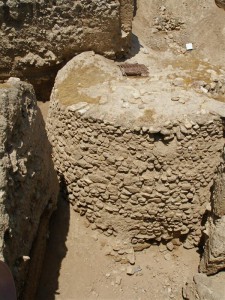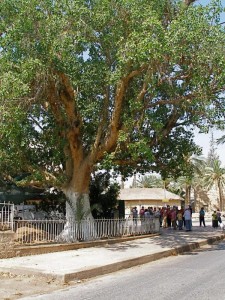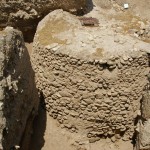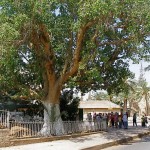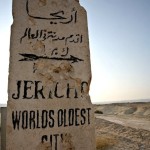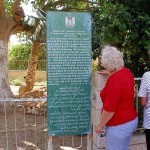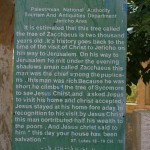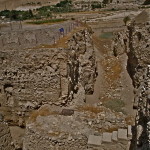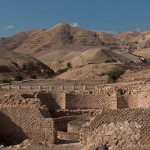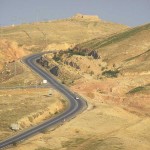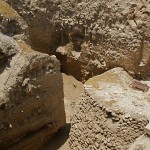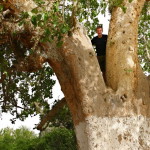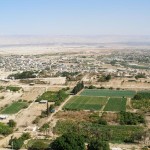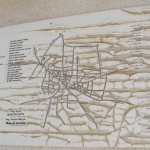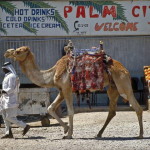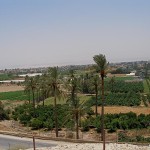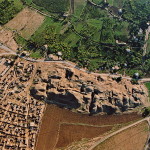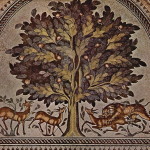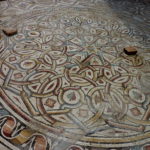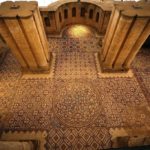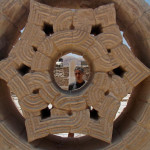West Bank
It’s reputed to be the oldest town on earth, with stories to match. The Israelites supposedly brought down its walls with a great shout and trumpet blasts. Here Jesus healed Bartimaeus, the blind beggar, and dined with Zacchaeus, the rich tax collector. And both Cleopatra and Herod the Great coveted this lush oasis.
Jericho (the name means “City of palms”) is mentioned 70 times in the Old Testament.
In perhaps the most famous battle in the Bible, it was the first town captured by the Israelites when they entered the Promised Land. But did “the walls come tumbling down”, as the song says? Archaeologists are divided on whether Joshua’s Israelites did in fact demolish a walled city.
Water from Jericho’s powerful perennial spring provides irrigation for abundant fruit, flowers and spices. “When the orange and lemon trees are in bloom, in the spring, the air is so heavy with their perfume that the visitor is sure he could bottle some of it and take it home with him,” writes archaeologist Godfrey Kloetzli.
The spring is associated with the prophet Elisha, who purified its waters by throwing salt into it.
Mound rose as towns were destroyed
The first hunter-gatherers settled here around 9000 BC. Archaeologists have unearthed the remains of more than 20 successive settlements at Tell es-Sultan (or Sultan’s Hill), a sun-baked earthen mound two kilometres north of the present city.
The 15-metre mound was formed over the centuries as towns were destroyed and new ones built on their rubble. The most striking discovery unearthed is a thick-walled stone tower, 7 metres high and 7.6 metres across, dating back to 7000 BC.
Besides being the oldest town on earth, Jericho is also the lowest (more than 250 metres below sea level).
City of priests and Levites
Since Jericho was on the normal route from Galilee to Jerusalem, Jesus passed through it several times.
Near the centre of the city, a centuries-old sycamore tree recalls the incident in which the tax collector Zacchaeus, too short to see over the crowd, climbed a sycamore’s branches in order to see Jesus. (The African sycamore fig should not be confused with the sycamore of Europe and North America, which is a different species.)
At a nearby Greek Orthodox monastery, the trunk of a dead sycamore behind a glass frame is also described as the tax collector’s tree.
Jesus chose the steep, rocky road from Jerusalem down to Jericho as the setting for the parable of the Good Samaritan.
In this parable, Jesus describes the compassion of an alien (the Samaritan) towards a man who had been beaten and robbed, contrasting it with the pitiless attitude of a priest and a Levite who had “passed by on the other side” of the road.
At that time, Jericho was one of the cities designated for the residence of priests and Levites rostered for duty in the Temple, about 28 kilometres away. About 12,000 priests and Levites are believed to have lived there, and they were a familiar sight on the road.
Cleopatra wanted a perfume
In 35 BC the Roman politician Mark Antony made a gift of Jericho to his lover Cleopatra of Egypt. Cleopatra had coveted the oasis because she wanted to control the plantations of persimmon (now extinct), which produced a perfume that reputedly “drove men wild”.
Later Cleopatra leased Jericho to Herod the Great at an exorbitant fee that cost him almost half Judea’s income. After Mark Antony and Cleopatra died, Herod gained ownership of the city. He built a grand residence and died there in 4 BC.
Another impressive palace at Jericho was built by Hisham ibn Abd al-Malik, a caliph who ruled the vast Umayyad empire in the 8th century.
Forgotten for over 1000 years, Hisham’s winter resort was rediscovered in the 19th century. After years of renovations, its large floor mosaic, containing more than five million pieces of stone, was unveiled in 2021.
In Scripture:
Joshua captures Jericho: Joshua 6:1-21
Elisha purifies the spring: 2 Kings:19-22
Zacchaeus meets Jesus: Luke 19:1-10
Jesus heals Bartimaeus: Mark 10:46-52
The Good Samaritan: Luke 10:25-37
Administered by: Palestinian National Authority.
- Ancient tower at Tell es-Sultan (Seetheholyland.net)
- Sycamore described as Zaccheus’ tree (Seetheholyland.net)
- Sign for world’s oldest city (© Visitpalestine.ps)
- Pilgrim reads about sycamore tree (Seetheholyland.net)
- What the sign says (© Tom Callinan/Seetheholyland.net)
- Ancient tower in foreground (© Israel Ministry of Tourism)
- Herod’s winter palace at Jericho (© Custodia Terrae Sanctae)
- Modern road from Jerusalem down to Jericho (© Custodia Terrae Sanctae)
- Tower (right) dated to 7000 BC (Seetheholyland.net)
- Man in sycamore tree (David Niblack)
- Jericho from cable car (Seetheholyland.net)
- Map of Jericho (Seetheholyland.net)
- Sign at ancient settlement of Jericho (Seetheholyland.net)
- Bedouin and his camel in Jericho (© Israel Ministry of Tourism)
- Lush growth in Jericho’s plantations (Seetheholyland.net)
- Tell es-Sultan from the air (Wikimedia)
- Mosaic in audience room of bathhouse at Hisham’s Palace (Wikimedia)
- Detail of mosaic floor in Hisham’s Palace (DYKT Mohigan)
- Large mosaic floor unveiled at Hisham’s Palace in 2021 (Phy.org)
- Sculpture at Hisham’s Palace, Jericho (Kourosh)
References
Charlesworth, James H.: The Millennium Guide for Pilgrims to the Holy Land (BIBAL Press, 2000)
Freeman-Grenville, G. S. P.: The Holy Land: A Pilgrim’s Guide to Israel, Jordan and the Sinai (Continuum Publishing, 1996)
Gonen, Rivka: Biblical Holy Places: An illustrated guide (Collier Macmillan, 1987)
Inman, Nick, and McDonald, Ferdie (eds): Jerusalem & the Holy Land (Eyewitness Travel Guide, Dorling Kindersley, 2007)
Kloetzli, Godfrey: “Jericho”, Holy Land, summer 2004.
Murphy-O’Connor, Jerome: The Holy Land: An Oxford Archaeological Guide from Earliest Times to 1700 (Oxford University Press, 2005)
Wareham, Norman, and Gill, Jill: Every Pilgrim’s Guide to the Holy Land (Canterbury Press, 1996)
External links

